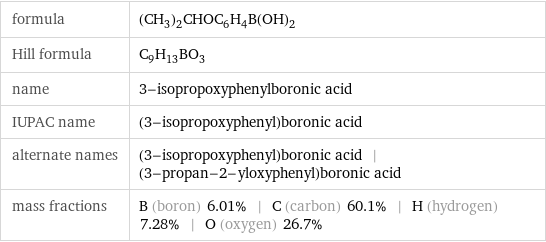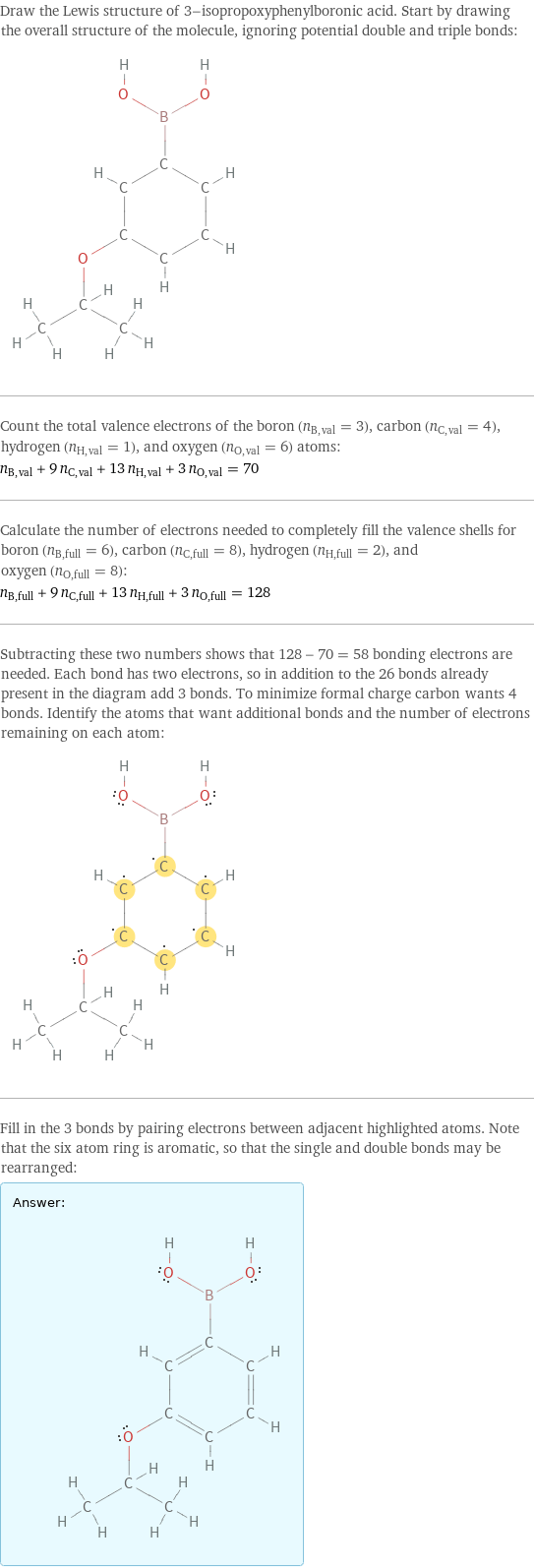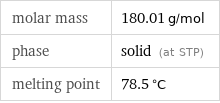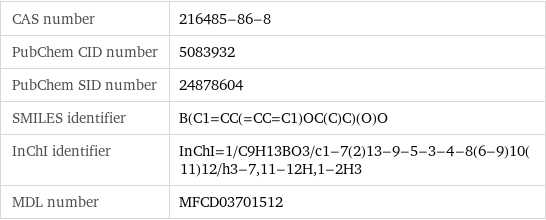Input interpretation

3-isopropoxyphenylboronic acid
Chemical names and formulas

formula | (CH_3)_2CHOC_6H_4B(OH)_2 Hill formula | C_9H_13BO_3 name | 3-isopropoxyphenylboronic acid IUPAC name | (3-isopropoxyphenyl)boronic acid alternate names | (3-isopropoxyphenyl)boronic acid | (3-propan-2-yloxyphenyl)boronic acid mass fractions | B (boron) 6.01% | C (carbon) 60.1% | H (hydrogen) 7.28% | O (oxygen) 26.7%
Lewis structure

Draw the Lewis structure of 3-isopropoxyphenylboronic acid. Start by drawing the overall structure of the molecule, ignoring potential double and triple bonds: Count the total valence electrons of the boron (n_B, val = 3), carbon (n_C, val = 4), hydrogen (n_H, val = 1), and oxygen (n_O, val = 6) atoms: n_B, val + 9 n_C, val + 13 n_H, val + 3 n_O, val = 70 Calculate the number of electrons needed to completely fill the valence shells for boron (n_B, full = 6), carbon (n_C, full = 8), hydrogen (n_H, full = 2), and oxygen (n_O, full = 8): n_B, full + 9 n_C, full + 13 n_H, full + 3 n_O, full = 128 Subtracting these two numbers shows that 128 - 70 = 58 bonding electrons are needed. Each bond has two electrons, so in addition to the 26 bonds already present in the diagram add 3 bonds. To minimize formal charge carbon wants 4 bonds. Identify the atoms that want additional bonds and the number of electrons remaining on each atom: Fill in the 3 bonds by pairing electrons between adjacent highlighted atoms. Note that the six atom ring is aromatic, so that the single and double bonds may be rearranged: Answer: | |
Basic properties

molar mass | 180.01 g/mol phase | solid (at STP) melting point | 78.5 °C
Units

Chemical identifiers

CAS number | 216485-86-8 PubChem CID number | 5083932 PubChem SID number | 24878604 SMILES identifier | B(C1=CC(=CC=C1)OC(C)C)(O)O InChI identifier | InChI=1/C9H13BO3/c1-7(2)13-9-5-3-4-8(6-9)10(11)12/h3-7, 11-12H, 1-2H3 MDL number | MFCD03701512